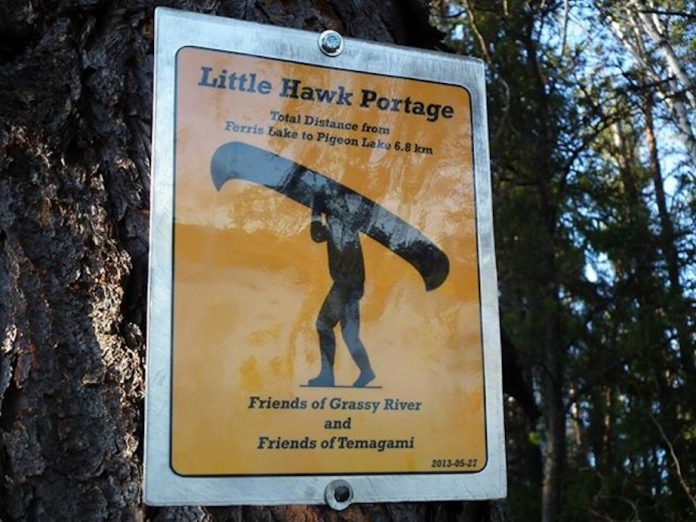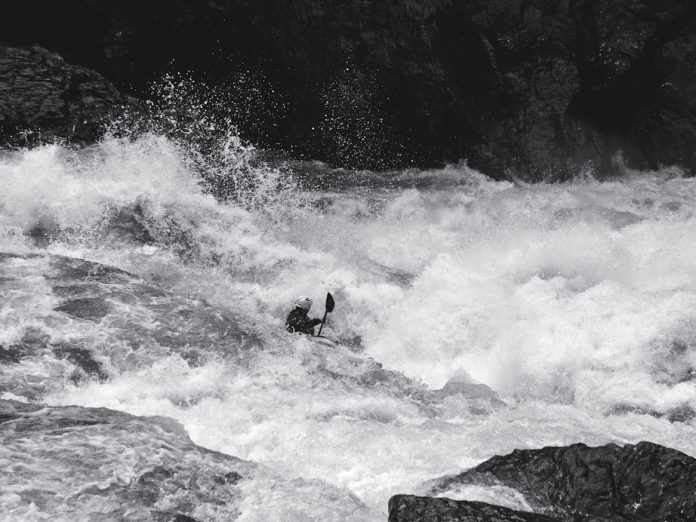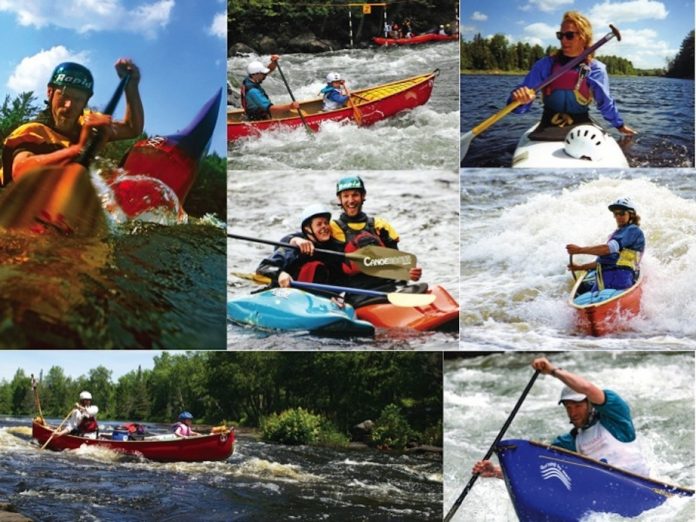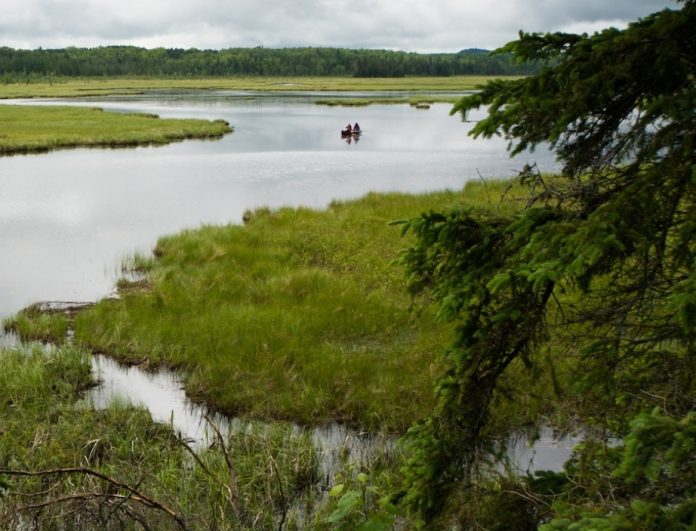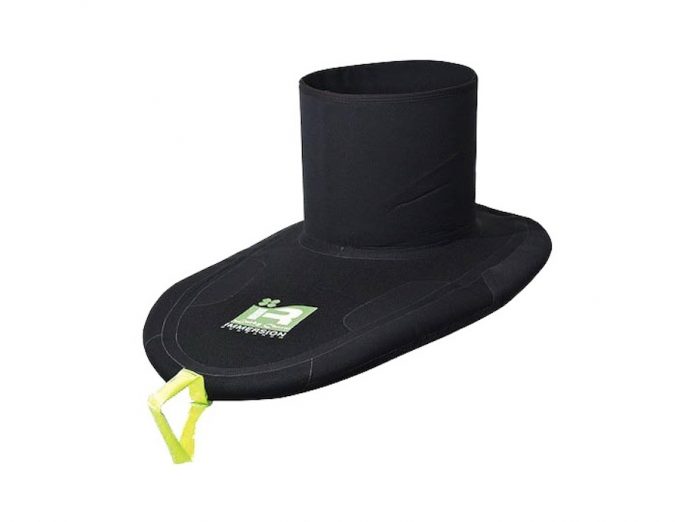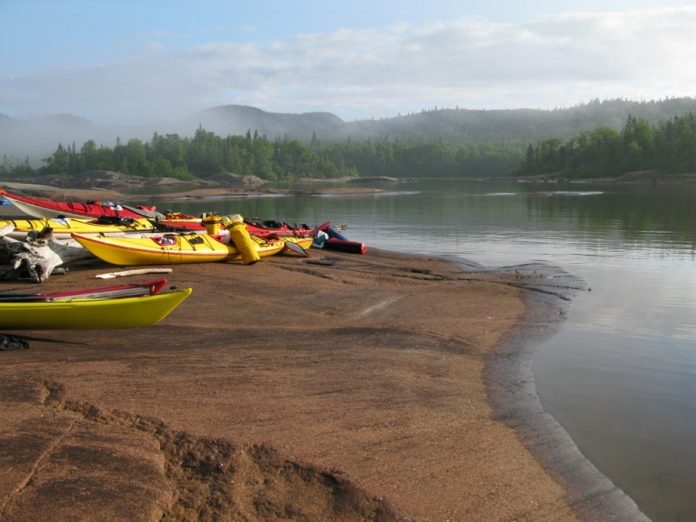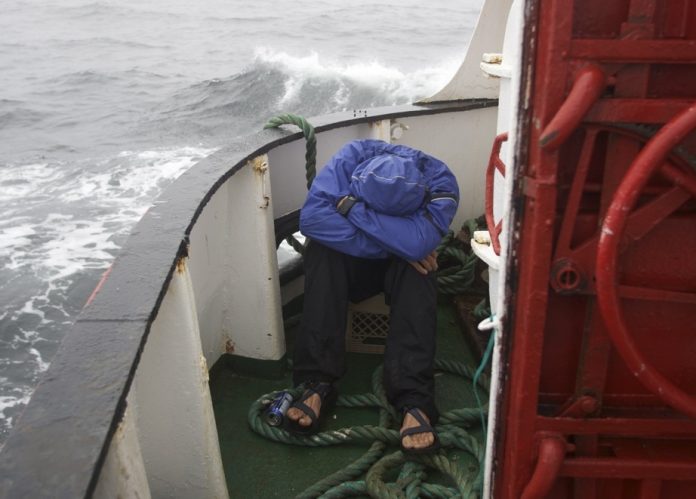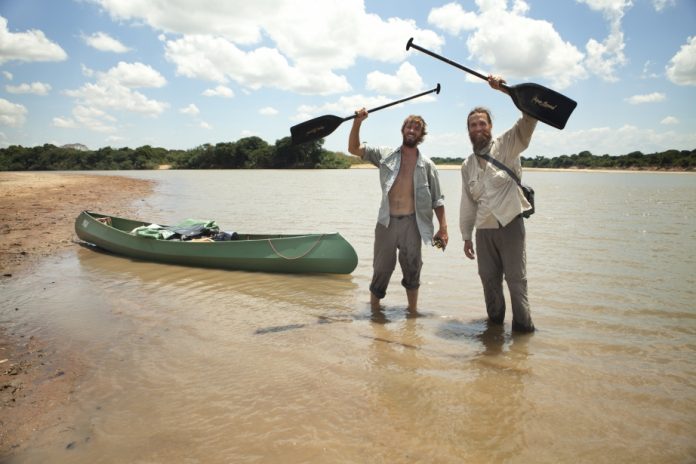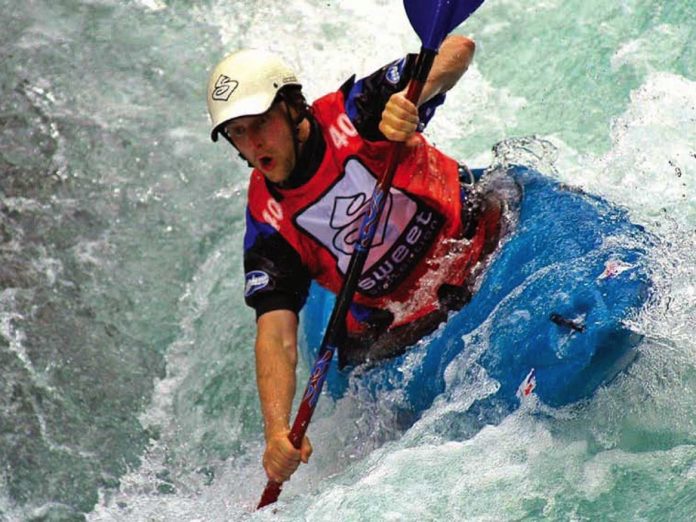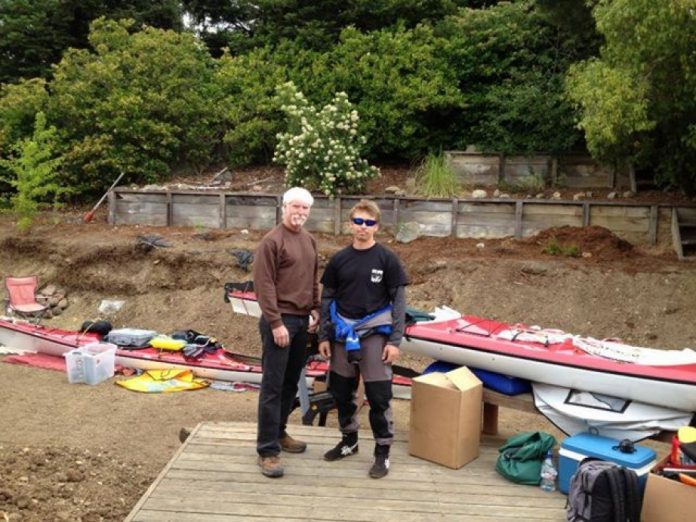After almost 90 years of dormancy, The Little Hawk Portage routes have been reconnected and reopened because of a three-year restoration process by the Friends of Grassy River and the Friends of Temagami.
Paul Bisson, a member of Friends of Temagami, pulled out his video camera at exactly 10:45 a.m. on May 27 to record his first walk along the freshly finished portage route that completed the restoration.
“Very special message today… We have broken through Little Hawk Portage; we have broken through to String Lake,” Bisson said in a video entitled “Portage trail between Drop-String Lake” that is posted on their Facebook page. “We have successfully opened up this historical portage.”
Crossing the height of land between the Arctic and Atlantic watersheds near Gowganda, the Little Hawk Portage connects the West Montreal River and the Grassy River through four portages totaling almost seven kilometers. The Little Hawk Portage gained its prominence during the fur trade when it became part of the Hudson’s Bay Company route between Fort Matachewan and Mattagami, but was originally used by the Ojibway people and its origins could date back anywhere from 600 to 2,500 years.
To confirm historical accuracy during the restoration, the team spent time looking for evidence of the original portages by locating and flagging signs, blazes and ancient footpaths—now likely used by the local moose population—before spending hours clearing and opening up the portages. But Laurent Robichaud, acting chair of the Friends of Grassy River, said in a press release that the “project would not have been possible without the cooperation of the local First Nations.”
“This represents a joining of hands and hearts of all those who share these waters today,” Robichaud said.
Bisson hopes that the Little Hawk Portages will also contribute to passing on the love for water and portaging to the next generation of canoeists. Having once been used by the Lake Temagami youth camps journeying to James Bay in the early 1900s, Bisson said in a video entitled “The Little Hawk Portages (Search) 2012,” which is also posted on their Facebook page, that he hopes the reopening will lead to “futher use by youth camps from the south out of Temagami and [as] a great corridor for everyone to use.”
But Bisson’s excitement to have fellow canoeists using the reopened portages comes with a warning: “It’s for serious canoers only and people that really do know how to navigate through the forest because it’s intermediate to advanced travel through here.”
To watch either of the videos mentioned in the article, see more pictures from the Little Hawk Portages or learn more about the restoration process you can visit the “Little Hawk Portage Project” Facebook page at https://www.facebook.com/Littlehawkportage



